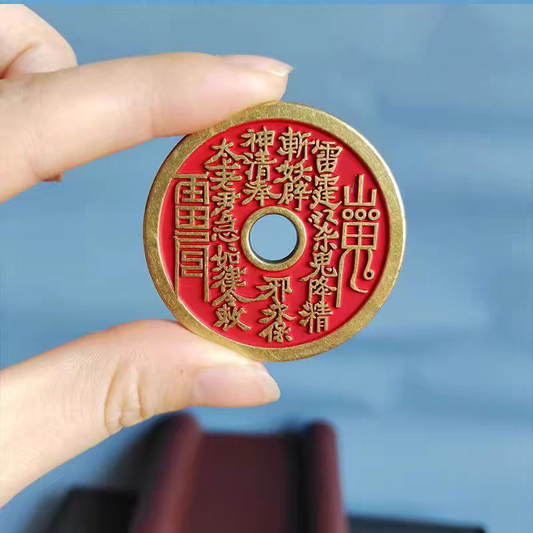
Three Concepts of Taoist Cultivation
paulpengPartager
Taoism regards essence, qi, and spirit as the three treasures. As long as Taoists can fully cultivate essence, qi, and spirit during their practice, they can achieve the Great Tao. The real person Zhang Sanfeng said, "When the qi and pulse are calm and the original spirit is inherent within, it is called true nature; when the mind is calm and the original qi grows within, it is called true life." The founder of Quanzhen Taoism, Wang Chongyang, also said: "Nature is the original spirit, and life is the original qi." The "nature" mentioned in Taoist practice refers to the spiritual aspects of a person; while "life" refers to the material aspects. Taoist cultivation focuses on both nature and life, and generally emphasizes the dual cultivation of nature and life. However, when it comes down to specific Taoist schools, there are three different concepts with considerable differences.

Concept One: Focus on life first, then nature. This is the proposition of the Southern School of Quanzhen Taoism. The actual founder of the Southern School was Bai Yuchan, an extraordinary figure in the Taoist sect. Bai Yuchan was from Hainan. When he was young, he was a chivalrous man who killed someone and had to wander in the rivers and lakes. While wandering, Bai Yuchan met Chen Nan, a master of internal alchemy, and received the inheritance of internal alchemy cultivation from the real person Zhang Ziyang. After achieving success in cultivation, Bai Yuchan still remained unrestrained. He once insulted the local official in the then capital, Hangzhou, after drinking and was driven out by the government.
The cultivation methods of the Southern School created by Bai Yuchan followed Zhang Ziyang's proposition of focusing on life first and then nature, with emphasis on life cultivation.Lü Dongbin claimed, "Only cultivating nature and not life is the first illness in cultivation," which can approximately serve as an annotation for the cultivation proposition of the Southern School. The Southern School asserts that Taoists' practice begins with transforming essence into qi, proceeding step by step. At the highest stage, they can refer to the methods of Zen practice to understand the source of nature.
Concept Two: Focus on nature first, then life. This is the proposition of the Northern School of Quanzhen Taoism. The founder of the Northern School was Wang Chongyang, known as "Wang Haifeng." Wang Chongyang cultivated in the Tomb of the Living Dead for many years and encountered the two immortals Zhongli Quan and Lu Dongbin in Ganhe Town, obtaining the teachings of the Golden Elixir Great Tao. Compared to traditional Taoist sects, the Northern School of Quanzhen Taoism was more influenced by the Buddhist Zen school. The religious altars established by Wang Chongyang at the beginning were all named after "Three Teachings," advocating the integration of the three teachings.
The Northern School asserts that in cultivating the Tao, one should purify the heart, eliminate desires, recognize the mind, and realize the nature. Then, one should transform essence into qi and cultivate life. The disputes over the cultivation concepts between the Southern and Northern Schools of Quanzhen Taoism are quite like the disputes over swordsmanship and internal energy in martial arts novels. Should one practice swordsmanship first? Or internal energy first? Each side has its reasons. Anyway, the views of both the Southern and Northern Schools on the dual cultivation of nature and life are the same, only the sequence of cultivation is different.

Concept Three: Nature and life are one, with nature governing and life following; as long as nature is understood, life is naturally understood, and there is no need to specifically cultivate life. This proposition goes a step further than the proposition of the Northern School and is more like the Buddhist viewpoint. As long as nature is cultivated well, the physical body will naturally be fine. In fact, cultivating life is to stimulate the vitality of the endocrine system, reproductive system, circulatory system, etc. through internal alchemy, thereby improving the physical quality and rejuvenating vitality. Cultivating nature is probably to stimulate the deep wisdom of the brain and develop the life potential of the human body. Perhaps there is indeed a connection between cultivating life and cultivating nature that is unknown.
The eminent Taoist Baozhenzi Yang Daosheng of the Ming Dynasty held the view that cultivating nature naturally leads to understanding life. Yang Daosheng was a disciple of the Longmen School of the Northern School of Quanzhen Taoism and a descendant of Qiu Chuji. It is not surprising that he held this view. The Taoist Priest Mu Changchao of the Yuan Dynasty also held this view. The poem "Linjiang Immortal" he wrote: "To learn the Tao, one must understand the seal of the mind's ground. Moreover, yin and yang must walk together. One cannot reach things only for oneself. Small vehicles have no wisdom. When will the Great Tao be achieved? One kind of arrogance and self-boasting, falsely confusing human emotions. Only seeking benefits and fame. Not thinking about the suffering of life and death, the path is dark for myriad kalpas." It is full of the essence of Zen and seems to have been greatly influenced by Buddhism.
In the practice of various Taoist schools, it is generally believed that both nature and life are important. It's just that the concepts of each school on how to achieve the goal of dual cultivation of nature and life are not the same. Among the above three concepts, which one do you agree with more?









